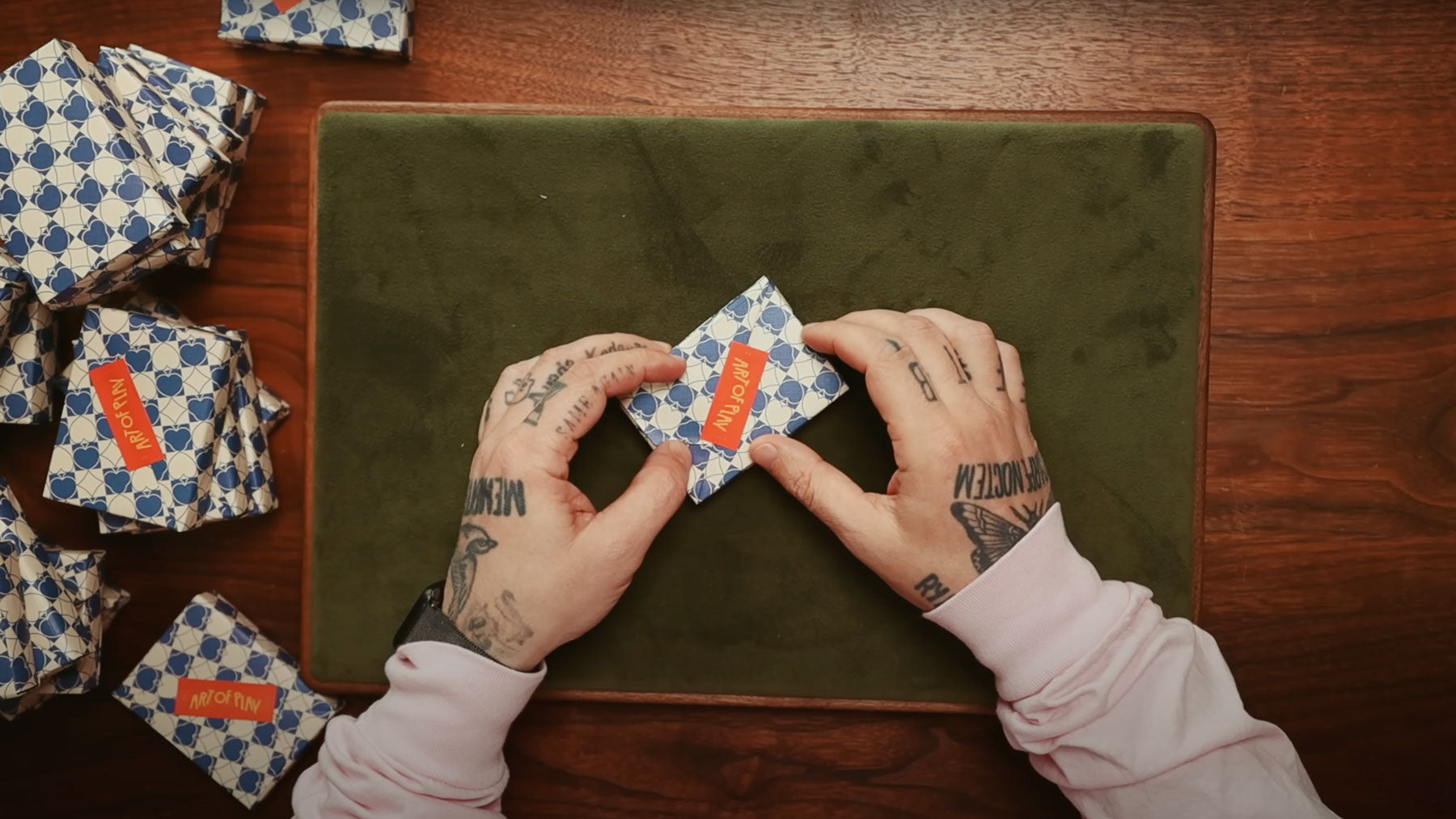For fans of puzzle movies, three films stand head and shoulders above the rest: The Last of Sheila (1973), Clue (1985), and The Game (1997).
Though in different genres, each is a carefully plotted mystery story about a person or group of people who receive—literally—invitations to adventure, whether as seemingly benign as a birthday gift or as sinister as a note from a blackmailer. The people are forced to solve puzzles, assess evidence, make deductions, and undertake dangerous, revealing journeys, often as the corpses pile up around them.
In celebration of cinematic puzzlers, and partly because of the release of Glass Onion: A Knives Out Mystery, let’s begin with a look at The Last of Sheila—one of the greatest, little-known movies of all time and a massive inspiration for mystery-obsessed filmmakers like Rian Johnson.
Editor’s note: This article contains plot details of the aforementioned movies, but no spoilers. After all, we do love mystery!
In The Last of Sheila, directed in 1973 by Stephen Sondheim, a group of six Hollywood-adjacent friends gather on the yacht of mischievous movie producer Clinton Greene. One year earlier, their close friend Sheila was killed by a hit-and-run driver, and the murder remains unsolved.
To kick off the game, Greene gives each of the six guests a role such as “Informer” and “Ex-Convict.” He tells them that the roles are actually secrets held by members of their group: one person present is actually an ex-convict, while another had indeed informed on their colleagues. Over the rest of the week, the players can follow a series of elaborate clues, racing each other to locate staged scenes with evidence about each role—or to protect their own secret from being revealed.
Sondheim is well-known for his musical productions, but according to his biographer, he was also a lifelong fan of puzzles and experiential games. In the late 1960s, he set cryptic crossword puzzles for New York Magazine, introducing the format to American audiences. And he ran elaborate treasure hunts and party games for his friends, renting limousines and sending them all over the city hunting for new clues, like slices of cake that, when recombined, formed directions about the next location in the game. In the years before his death in November 2021, he was a familiar face at New York City escape rooms.
(Read more: “The Art of Escape Rooms: Six Strategies for Success.”)
The movie Clue takes its inspiration directly from the board game of the same name, designed by Anthony E. Pratt in 1943. In the board game, players move between rooms in an old manor house in which a murder has been committed, working to deduce the identity of the murderer. Pratt was inspired by the popular detective fiction of Agatha Christie, and in the United States the game was marketed with a Sherlock Holmes tie-in, although he never appears in the game.
Clue carries over the detective influences of the board game, setting its scene in New England in 1954 at the heart of McCarthyism. In the film, an anonymous blackmailer invites six strangers to a remote house on a stormy night. Each person has an equally plausible reason to kill their blackmailer. The lights go out, and—blam!—suddenly there’s a body on the floor, and nobody knows whodunnit.
In fact, not even the viewing audience always knew. At the end of the film, Wadsworth the butler (played impeccably by Tim Curry) narrates three possible ways the murder-filled evening could have gone down, each with a different killer. If you’re watching the movie on a streaming service or a disc, you’ll see all three. But in 1985, each screening of Clue only featured one of the three endings. The studio hoped it would encourage repeat viewings, but it didn’t work, and the film flopped, only for it to become a cult favorite decades later.
While Clue took its inspiration from a board game, The Game, directed by David Fincher, was both influenced by puzzle games and helped inspire real-world games after its release.
In The Game, Michael Douglas plays Nicholas Van Orton, a wealthy investment banker whose younger brother gives him the ultimate “gift for the man who has everything”—a super-customized game, created by a mysterious company, Consumer Recreation Services. Strange events begin to trickle into Van Orton’s life, and he must unravel the mysterious conspiracy as the ordeals escalate.
The Game was inspired by “The Game,” a real-life puzzle-based treasure hunt that was inspired by the 1980 film Midnight Madness, which was itself inspired by a 1973 treasure hunt created by two Californians. And if that’s not enough layers for you: the film The Game inspired more real-world puzzle hunts and car-based games, as well as the first alternate reality game (ARG), 2001’s The Beast.
The popularity of 2019’s Knives Out and its 2022 sequel Glass Onion shows that audiences are still hungry for intriguing puzzles, twisty plots, clever detectives, and a bit of murder; the playful spirit that viewers embrace will surely sow its seeds in a new generation of designers to come.
Feel like going down your very own puzzle rabbit hole? Check out all the hidden secrets in our art journal TANGRAM.
Words by Laura E. Hall








Leave a comment
This site is protected by hCaptcha and the hCaptcha Privacy Policy and Terms of Service apply.